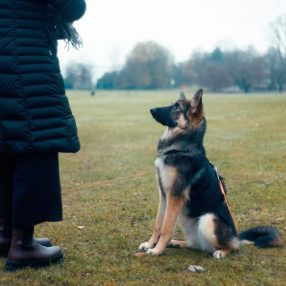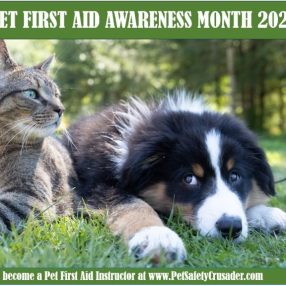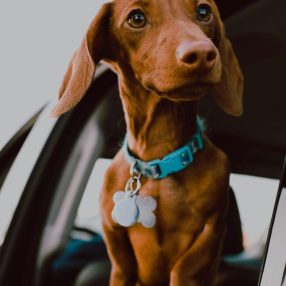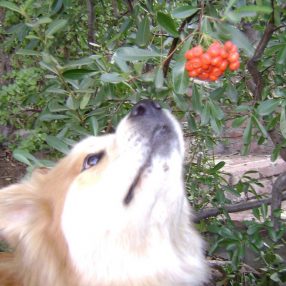 Imagine you and your dog step out the front door to get the mail. Depending on the time of day, you might notice the scent of your neighbor’s stew wafting across the breeze. As you reach the street, if a car recently passed, exhaust may be present while finally, if you have a scented rose bush planted near your mailbox, you may lean over and inhale the sweet aroma as you reach in for your mail. That’s about all folk for our human sniffers! Your dog on the other paw, has been enjoying a virtual cornucopia of smells since he crossed the threshold on to the walkway. Every squirrel, bird and caterpillar that has maneuvered by, left their own unique calling card for his nose to read. Should your dog lift his nose from the ground, he’ll smell the neighbor’s concoction, not just stew, but the individual scents of beef, onion, garlic, carrot, potatoes and thyme. Continuing to the mailbox, sure the exhaust is noticed but of more interest are the scents of other dogs that have used your mailbox post as a “fire hydrant!” Your dog can determine whether they were male, female or in heat and even how tall by the height of the pee mark. The sweet aroma of the rose is probably of less interest than the beetle who had recently crawled across the leaf and the mail – wow! he can detect every handler from the sender to you, and if your dog could speak…he could likely tell you what the lady who licked the envelope had for dinner!
Imagine you and your dog step out the front door to get the mail. Depending on the time of day, you might notice the scent of your neighbor’s stew wafting across the breeze. As you reach the street, if a car recently passed, exhaust may be present while finally, if you have a scented rose bush planted near your mailbox, you may lean over and inhale the sweet aroma as you reach in for your mail. That’s about all folk for our human sniffers! Your dog on the other paw, has been enjoying a virtual cornucopia of smells since he crossed the threshold on to the walkway. Every squirrel, bird and caterpillar that has maneuvered by, left their own unique calling card for his nose to read. Should your dog lift his nose from the ground, he’ll smell the neighbor’s concoction, not just stew, but the individual scents of beef, onion, garlic, carrot, potatoes and thyme. Continuing to the mailbox, sure the exhaust is noticed but of more interest are the scents of other dogs that have used your mailbox post as a “fire hydrant!” Your dog can determine whether they were male, female or in heat and even how tall by the height of the pee mark. The sweet aroma of the rose is probably of less interest than the beetle who had recently crawled across the leaf and the mail – wow! he can detect every handler from the sender to you, and if your dog could speak…he could likely tell you what the lady who licked the envelope had for dinner!
Now let’s take a closer look at that PAWmazing nose: https://youtu.be/p7fXa2Occ_U
That tiny spritz of perfume we smell in a room is just as strong in an enclosed stadium to a dog! Because of that, toxic fumes can be much more deadly.
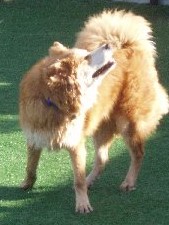 Inhaled poisons include aerosol sprays, carbon monoxide, gases, and other fumes inhaled into your pet’s lungs. Bleaches, detergents, and disinfectants are the most likely household chemicals to cause a problem. Therefore, keep pets away from these chemicals by securing them before, during, and after cleaning time. Pool/spa chemicals are also commonly implicated in inhalation poisonings. Keep these products safely contained during regular pool/spa maintenance.
Inhaled poisons include aerosol sprays, carbon monoxide, gases, and other fumes inhaled into your pet’s lungs. Bleaches, detergents, and disinfectants are the most likely household chemicals to cause a problem. Therefore, keep pets away from these chemicals by securing them before, during, and after cleaning time. Pool/spa chemicals are also commonly implicated in inhalation poisonings. Keep these products safely contained during regular pool/spa maintenance.
Remove ALL animals from the home for at least 24 hours when any pest control is used, even if it says “safe” or “pet friendly.” Ask for a guarantee in writing as due diligence. If a company won’t put it in writing, it may not be as safe as they claim, and do realize that “Animal Safe” does not necessarily mean safe for ALL species!
 Whenever an animal breathes toxic fumes, assume that the airways will be inflamed. Most inhaled poisons will cause difficulty breathing, but there are many implications…
Whenever an animal breathes toxic fumes, assume that the airways will be inflamed. Most inhaled poisons will cause difficulty breathing, but there are many implications…
Flat-faced (brachycephalic) breeds have very short noses and don’t have the ability to filter out toxins before they reach the longs. Although longer-snouted dogs have more time to filter, those toxins can be extremely harmful to their nasal passages.
Signs & Symptoms
- Breathing difficulty or distress
- Coughing, sneezing, runny/irritated eyes
- Salivation or vomiting
- Twitching/Seizures
- Collapse
Action Steps
- Move dog or cat to a well-ventilated area and monitor breathing. Do not return pet to house or contaminated room until it is well aired out!
- Begin rescue breathing if pulmonary arrest by holding mouth closed and breathing into the nostrils every 2-3 seconds; smaller, quicker puff breaths for puppies and kittens.
- If there is no pulse, begin CPCR and get to veterinary help at once
Non-stick cookware made from polytetrafluoroethylene (PTFE) is toxic to birds resulting in death in just minutes! This include normal usage. The surface doesn’t need to be overheated to emit fumes and be deadly to birds. We don’t generally even detect a smell, but it is there. In addition to cookware, non-stick surfaces may be on: indoor cooking grills, deep fryers, waffle irons, drip pans, self-cleaning ovens, hair dryers, space heaters, irons, ironing board covers, clothes dryers, heat lamps and many small appliances.
Second-hand smoke from cigarettes, cigars and pipes can cause skin irritation, respiratory disease and chronic eye problems in pet birds. Second-hand smoke from marijuana can cause regurgitation and depression in birds.
Common disinfectants and household cleaning products release fumes that are toxic to birds – chlorine bleach, ammonia and mixtures ending in “phenol.” Aerosol products too (perfume, deodorant, hairspray) can cause respiratory issues. Carpet cleaners, fresheners, upholstery cleaners and similar products, even new carpet (containing formaldehyde in the glue) can be deadly if inhaled as can nail polish, paint and varnish.
Natural gas leaks can cause sudden death and any type of heater used with inadequate ventilation can be deadly. CO2, which is odorless, colorless and tasteless, can be fatal to anyone, so please have a CO2 detector in the room with your bird and never, ever, ever use kerosene heaters around your feathered friend.
The list goes on with scented candles, potpourri, incense, plug-in room fresheners and essential oils, all of which can stimulate or depress a bird’s central nervous system, irritating eyes, nose and upper respiratory tract. Essential oils may be found in cleaning products, so if a bird is part of the family, read labels closely!
Clean bird cages ONLY with approved bird-safe products. Plain soap and hot water or diluted white vinegar solution works well too to disinfect. Never use bleach!
Signs & Symptoms
- Breathing difficulty or distress
- Coughing, sneezing
- Conjuctivitis (eye irritation)
- Secondary bacterial infections can occur over time
Action Steps
- Move bird to a well-ventilated area and monitor breathing.
- If no immediate improvement, get to your avian veterinarian at once.
- Air out contaminated room well, before returning bird to it.
As the saying goes, “Better safe than sorry,” and there is no such thing as too safe with your furry or feathered family members!
VIEW VIDEO ON THIS TOPIC HERE: https://youtu.be/HYsr6bETV60
And if you share your life with other species, be sure to check out my classes and books on birds, rabbits and pocket pets at www.PetSafetyCrusader.com/products/classes
For 20 years Denise Fleck’s Sunny-dog Ink motto has been “Helping people to help their pets,” and she has…personally having taught close to 20,000 pet lovers animal life-saving skills and millions more on “The Doctors,” CNN, “Kirstie Alley’s Big Life,” Animal Planet and other TV shows. Denise is a frequent conference speaker, developed a line of pet first aid kits, written a dozen books and now offers classes online.
Note: The articles on this page are copyrighted. Please do not reprint or use portions for any purpose without written permission from the author. Request permission for usage by sending an email explaining how you’d like to use the materials and what parts specifically. Thank you in advance!



